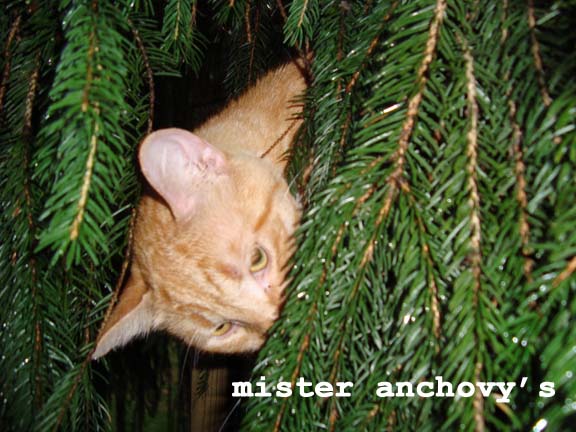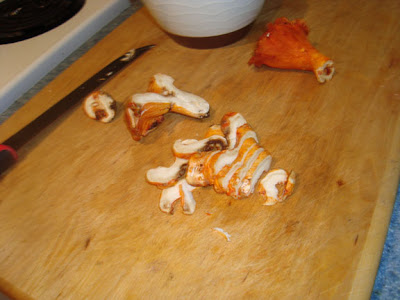Preparing Hypomyces lactifluorum for cooking or drying

Often when I find this mushroom, which is commonly known as the lobster, it is partially buried in leaf debris and dirt and what-have-you. The Hypomyces contorts the host mushroom when it attacks, sometimes twisting it and creating holes. As well, the host may not have been in perfect condition when attacked. The Hypomyces firms up the flesh of the host, paints it lobster shell red-orange and transforms it into a tasty mushroom.
I start by washing these mushrooms. Water doesn't seem to have any ill effect on flavour or texture. Brush out as mush debris and dirt and grit as possible. Cut out anything that is deep red, spongy, brown or otherwise unappetizing. Then slice the mushroom into thin slices. I usually make them an around eighth inch thick.
Finally, simply cut away anything that looks dirty or buggy or spongy from the slices, and you're ready to go.
I like to dry these for use later. I use a food dehydrator for this, then put the dried lobsters in mason jars. Later, they reconstitute very well, retaining the good firm texture. When you cook with these mushrooms, be sure to cook them well, as you would with any wild mushroom. When eating any mushroom for the first time, eat just a little to be sure your body tolerates it OK.




4 comments:
You have inspired me! I am going to get myself a mushroom book and I have also found on Amazon a book on foraging that looks pretty good! I'm not sure what I'll find, but I have so many woods out there to explore!
If you're going to collect mushrooms, get a good field guide. I use the Audibon Guide to Mushrooms of North America but some people prefer others. For the west, Mushrooms Demystified is an extensive book but pricey. Remember the rules I posted the other day. Don't eat ANY mushrooms unless you are 100% sure what you are eating.
Thanks for the cleaning tips. We just found a collection of lobster mushrooms on Sunday and will be cooking them up tonight. Last night it was chanterelles. Oh yum.
Mushrooms Demystified is a must. There's a great field guide for the west coast called All that the Rain Promises and More. It references MD once you've made an ID in the field guide.
Mushrooms Demystified is an excellent book, but a little bulky to take to the field. I keep a copy of the Audubon Guide in my car. Some people don't like the way that one is structured, but I find it very useful, particularly because it points out look-alikes.
SP, let me know how the lobsters were. I've read somewhere that Eastern lobsters are better than Western lobsters, but that could be hokum...maybe though, it depends on the host mushroom.
Post a Comment